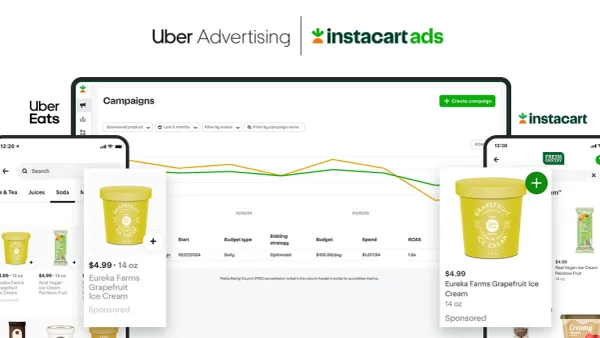Editor's note: This story is part of the Marketing Dive Outlook on 2021, a series on the trends that will shape the industry in 2021. For a look at the business trends affecting other industries, see the Dive Outlook on 2021.
Marketers face steep challenges in 2021 as the death of third-party cookies and changes to key identifiers, namely Apple's Identifier for Advertisers, upturn widely used digital marketing tactics. While first-party data remains the industry's top priority, its cousin — the more nebulously defined second-party data — is of growing importance, signaling that greater collaboration will be essential to businesses trying to build muscles weakened by the loss of cookies.
Earlier this week, Merkle released a report that detailed successful examples of second-party tactics, including a tie-up between Buick and Amazon that looked to net younger buyers for the automotive brand. The effort involved steering users to ask Amazon's Alexa voice assistant about information on Buick SUVs, which drove 150,000 people to a virtual showroom for the brand's vehicles, per Merkle. Other marketers could replicate this approach, especially since many are only just starting to grow their own stores of first-party data and may need to rely on other brands, publishers and platforms to achieve the reach they need in a more privacy-stringent world.
"If I don't have enough of my own scale or my own insights, how do I take this [data] and put this together with others?" Bruce Biegel, senior managing partner of Winterberry Group, said during a virtual presentation of the consultancy's 2021 forecasts Thursday.
Defining second-party
Identity is a complicated space with few shared definitions among marketers. That assessment holds true for second-party data: 41% of marketers surveyed by Winterberry Group defined the asset as another brand's first-party data "acquired through an intermediary service or platform," while 29% simply view it as third-party data masked under another name. Lack of clarity on what constitutes second-party data speaks to why marketers must navigate its application carefully, keeping privacy considerations in mind.
"We believe that second-party [data] and how you define it is about the permission you have and the use cases," Biegel said.
Those use cases include gleaning insights and measurement, but second-party data can functionally start to look a lot like third-party data once it's sold, licensed or commercialized by other means, according to Biegel. Winterberry Group devised its own definition of second-party data, describing it as "data shared in a dedicated environment with a clearly defined set of permissions and rights set between each of the parties, frequently with a third-party provider managing the environment."
"Understanding collaboration is about understanding those permissions and those rules," Biegel said.
Collaborative mindset
While the bedrocks of online identity are changing in significant and disruptive ways, marketing investments in the space are unlikely to cool. In fact, U.S. spending could double to about $8 billion by 2024, according to the Winterberry Group, as businesses focus more on data management, hiring talent and changing processes.
Some of the technologies receiving attention will enable more second-party data sharing, including data cooperatives. Biegel noted that data co-ops are actually ancient by internet standards, going as far back as the founding of the Abacus Cooperative in the early 1990s. But as the deprecation of cookies demonstrates, many of the digital marketing tactics built up in the decades since will no longer be relevant, forcing marketers to rethink their approaches. Privacy laws such as the EU'S General Data Protection Regulation and the California Consumer Privacy Act have compounded demand for different solutions, many of which first gained traction in Europe but are now seeing more interest in the U.S.
"One of the things we're starting to see is an expansion in the cooperatives — more players coming in because it's that source of first-party data that you can leverage as a member," Biegel said. "We're seeing a growth of data exchanges and marketplaces, another place for collaboration."
Other predictions have keyed into second-party data's rise in prominence as marketers look to fill the gaps in their cookie-less strategies. Merkle revealed that 25% of businesses view second-party partnerships as their top priority, while nearly half (49%) said it was a high priority.
"The partnerships are typically made with non-competitive organizations who share to benefit from collaboration," per Merkle's report. "Companies may find non-endemic partnerships that align two brands that won't cannibalize each other's audience."
Given the higher level of trust required in second-party deals, data clean rooms, bunkers and safe havens are also hot items for marketers in 2021. Clean rooms and the like allow multiple data sources to be amalgamated and analyzed in a way that safeguards user privacy and data ownership, per Merkle, essentially acting as a clearing house before that consumer information is applied for marketing purposes.
Clean rooms are offered by vendors, data-marketing agencies — including Merkle — as well as some of the major digital ad platforms. Utilizing such spaces can be pricey, but will only grow more common in the years ahead, as Gartner estimates that 80% of marketers with media budgets of $1 billion or more will adopt clean rooms by 2023.
"These are environments that allow you to share data, whether it's for insights, whether it's for looking at overlap, or whether it's for activation, all based around different permissions," Winterberry Group's Biegel said.























